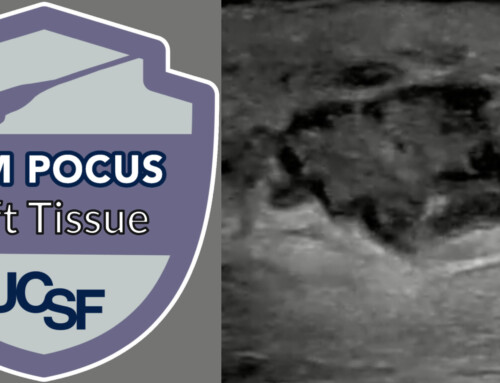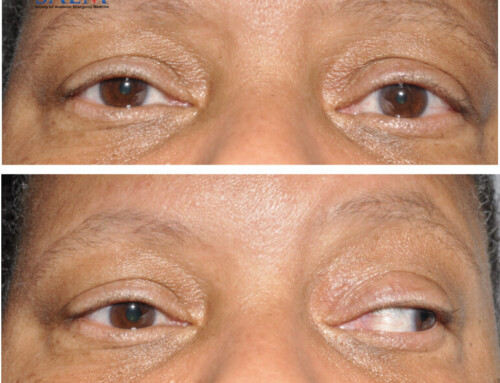
A 59-year-old male with no known past medical history other than an incidental abdominal aortic aneurysm presented with sudden onset, painless vision loss in his left eye. The patient was watching TV two days prior when he saw a “brightness” in his left eye and then progressive blurriness until his vision faded away, all occurring within the span of a minute. At the time of presentation, he only sees a speck of light from that eye. He denied associated pain, flashes, floaters, jaw claudication, the sensation of a “curtain falling”, prior vision problems, or a history of blood clots.
Eyes: Eyelids and lashes normal. Visual acuity: 20/30 OD, Light Perception OS. EOMI. PERRL. OD visual fields intact. Afferent Pupillary Defect OD. Normal conjunctiva. IOP 16 OD, 14 OS. Otherwise CN 3-12 intact.
Complete blood count (CBC): Within normal limits
Basic metabolic panel: Creatine 1.3 (unknown baseline)
ESR: Unmarkable
Central Retinal Artery Occlusion (CRAO) is an ocular emergency that presents as acute painless monocular vision, caused by ischemia and infarction to the retina via thromboembolic disease to the central retinal artery. It requires immediate consultation with ophthalmology as well as neurology as it is considered a stroke equivalent.
The case described above and several previously published case studies highlight the utility of POCUS in identifying CRAO via the retrobulbar spot sign (RBSS) within the optic nerve in a rapid, non-invasive manner that can be done prior to waiting for dilation for a fundoscopy exam. This has the potential to expedite consultations with specialty teams and treatment.
Several studies also reveal the potential of POCUS to predict the etiology of CRAO (arterio-arterial embolization vs cardio-embolic vs vasculitis) and thus to predict the success of thrombolytic treatment in CRAO. In a prospective monocenter study of 46 patients with ophthalmologically confirmed CRAO, embolism from large artery atherosclerosis (LAA, i.e. carotids or aortic arch) was the etiology in 27 patients, cardioembolic in 10 patients, vasculitis in 5 patients, and unknown in 4 patients. Out of the LAA patients, 59% had RBSS compared with only 20% in cardioembolic and 0% in the vasculitis patients. Within the 11 patients that underwent thrombolysis, statistically significant visual improvement occurred in all 4 patients with RBSS negative CRAO, while the 7 patients with RBSS positive CRAO had persistent visual impairment with persistent occlusion of their arteries. This study concludes that their results support the hypothesis that RBSS is seen due to calcium deposits that will not be dissolved with thrombolysis. Another small single-center German study points out the utility of seeing RBSS as 100% specific for an embolic cause of CRA, excluding temporal arteritis from the differential.
Take-Home Points
- POCUS can guide us in diagnosing a patient with painless vision loss prior to more time-consuming fundoscopy exam.
- Stroke workup for CRAO is necessary, and don’t forget about secondary prevention/risk stratification which must be part of the management.
- RBSS may predict poor response to systemic thrombolysis.
- Ertl M, Altmann M, Torka E, Helbig H, Bogdahn U, Gamulescu A, Schlachetzki F. The retrobulbar “spot sign” as a discriminator between vasculitic and thrombo-embolic affections of the retinal blood supply. Ultraschall Med. 2012 Dec;33(7):E263-E267. doi: 10.1055/s-0032-1312925. Epub 2012 Sep 21. PMID: 23023446.
- Nedelmann, Matt et al. “Retrobulbar Spot Sign Predicts Thrombolytic Treatment Effects and Etiology in Central Retinal Artery Occlusion” American Heart Association (AHA). Stroke. 2015;46:2322–2324 https://doi.org/10.1161/STROKEAHA.115.009839
- Smith, Austin T et al. “Using the Retrobulbar Spot Sign to Assist in Diagnosis and Management of Central Retinal Artery Occlusions.” Journal of ultrasound in medicine : official journal of the American Institute of Ultrasound in Medicine vol. 39,1 (2020): 197-202. doi:10.1002/jum.15073
Copyright
Images and cases from the Society of Academic Emergency Medicine (SAEM) Clinical Images Exhibit at the 2023 SAEM Annual Meeting | Copyrighted by SAEM 2023 – all rights reserved. View other cases from this Clinical Image Series on ALiEM.

Ai Xin Chen, MD
Harbor UCLA Medical Center

Latest posts by Ai Xin Chen, MD (see all)
- SAEM Clinical Images Series: Retrobulbar Spot Sign - January 29, 2024





